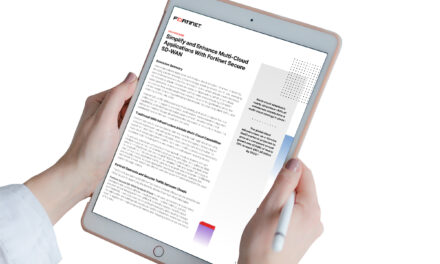How integrating generative AI into OT systems holds the potential to revolutionize industrial operations across a wide range of applications.
In an environment where operational technology (OT) and information technology (IT) networks and devices have converged, the looming cybersecurity risks pose a serious challenge to many organizations in Asia Pacific.
When cybercriminals add generative AI to their arsenal, the cyberthreat landscape starts to look even grimmer.
But generative AI is a tool that works both ways – cyber-defenders can learn to effectively wield it to protect OT systems too.
CybersecAsia sought out some insights into the role of generative AI in OT security in this Q&A with Henry Low, Solution Engineer, OPSWAT.
In what ways have generative AI been used by bad actors? Are there likely to be new threat vectors with cybercriminals leveraging AI even more in 2024 and beyond?
Low: Generative AI has unfortunately been misused by bad actors in several ways. One common misuse is the creation of realistic-looking but fake news articles, social media posts, and reviews, which can be used to spread misinformation and manipulate public opinion.
Additionally, generative AI has been used to create deepfake videos, which can be used to spread false information or defame individuals. There have also been instances of generative AI being used to automate the production of spam and phishing emails. There are also cases of generative AI being prompted to code malware or malicious scripts. These are just a few examples of how generative AI has been used by bad actors, and it’s important for ethical guidelines and regulations to be in place to mitigate these risks.

Yes, there are likely to be new threat vectors as cybercriminals continue to leverage AI and machine learning technologies. One potential concern is the use of AI to automate and enhance the efficiency of cyber-attacks, such as using AI-powered malware that can adapt and evolve to evade detection.
Additionally, AI could be used to better target and personalize phishing attacks, making it more difficult to discern between legitimate and fraudulent communications. Furthermore, AI-driven social engineering attacks could become more sophisticated and convincing, posing a greater threat to individuals and organizations.
What is the impact of generative AI on OT systems?
Low: Generative AI can have several positive impacts on Operational Technology (OT) systems, which are used to monitor and control physical devices and processes in various industries like manufacturing, energy, transportation, and more. Here are some potential impacts:
- Improved Predictive Maintenance: Generative AI can analyze vast amounts of sensor data from OT systems to identify patterns and anomalies that may indicate impending equipment failure. This enables proactive maintenance, reducing downtime and increasing operational efficiency.
- Optimized Process Control: Generative AI algorithms can optimize control strategies within OT systems by continuously learning and adapting to changing conditions. This can lead to improved process efficiency, energy savings, and better resource utilization.
- Enhanced Anomaly Detection: Generative AI can be trained to recognize normal operating conditions within OT systems and detect deviations or anomalies in real-time. This helps in identifying potential security breaches, equipment malfunctions, or safety hazards promptly.
- Adaptive Control Systems: Generative AI enables the development of adaptive control systems that can autonomously adjust parameters and settings based on real-time feedback from OT systems. This adaptability improves system resilience and responsiveness to dynamic operating conditions.
- Customized Product Development: Generative AI can assist in designing and optimizing products tailored to specific customer requirements or market demands by simulating different design configurations and evaluating their performance within OT environments.
Overall, the integration of generative AI into OT systems holds the potential to revolutionize industrial operations by enhancing efficiency, reliability, safety, and flexibility across a wide range of applications.
However, it’s essential to address challenges such as data privacy, cybersecurity, and ethical considerations to realize the full benefits of this technology.
How should organizations protect OT networks and devices, especially with the convergence of IT and OT in most industries today?
Low: Protecting OT networks and devices is crucial for maintaining the integrity, availability, and safety of critical industrial systems, especially as the convergence of IT and OT becomes more prevalent.
We can rely on time-tested, proven strategies and security fundamentals that organizations can implement to enhance security in OT environments:
- Segmentation: Implement network segmentation to isolate OT systems from enterprise IT networks. This limits the potential impact of security breaches or malware infections by containing them within specific segments of the network.
- Access Control: Enforce strict access control policies to restrict unauthorized access to OT devices and systems. Use role-based access control (RBAC) and multi-factor authentication (MFA) to ensure that only authorized personnel can interact with critical assets.
- Network Monitoring: Deploy robust network monitoring solutions to continuously monitor OT traffic for suspicious activities or anomalies. Intrusion detection systems (IDS) and intrusion prevention systems (IPS) can help detect and mitigate security threats in real-time.
- Patch Management: Implement a comprehensive patch management program to regularly update software and firmware on OT devices to address known vulnerabilities. Ensure that patches are thoroughly tested in a controlled environment before deployment to avoid disrupting critical operations.
- Secure Remote Access: Limit remote access to OT systems and devices, and use secure VPN connections with strong encryption and authentication mechanisms. Implement session logging and auditing to monitor remote access activities for any signs of unauthorized or malicious behavior.
By implementing these security measures, organizations can better protect their OT networks and devices from evolving cybersecurity threats while maintaining the reliability and availability of critical industrial systems.
Additionally, ongoing monitoring, testing, and continuous improvement are essential to adapt to changing security landscapes and emerging threats effectively.

















